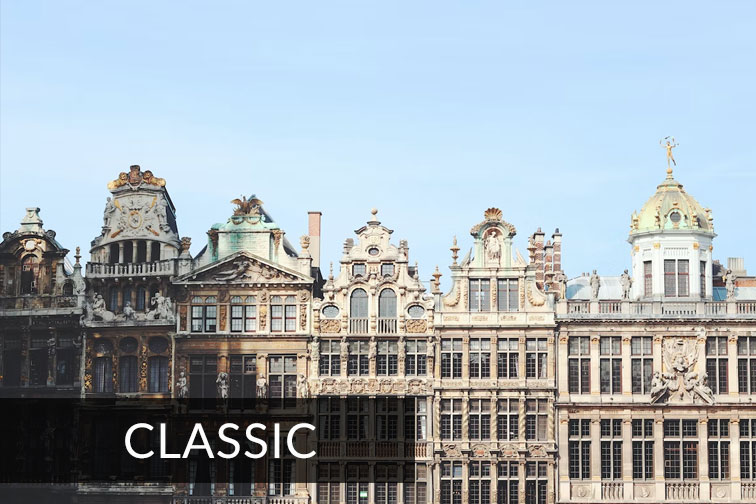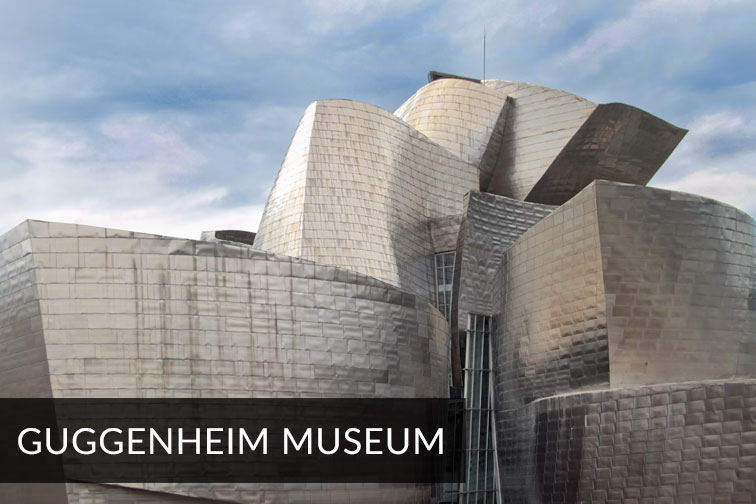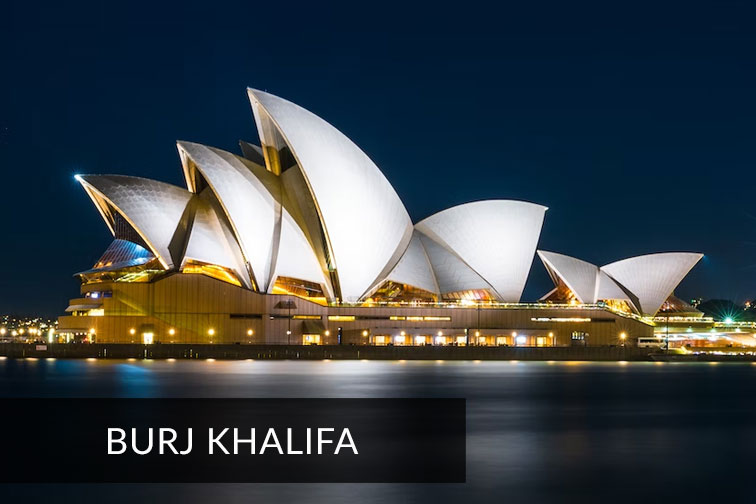Architecture Photography: Tips, Techniques and Equipment
Michael • February 20, 2023 • 9 min read
Michael • February 20, 2023 • 9 min read

Architecture photography is a unique genre that blends technical skill with creativity to capture the beauty and complexity of buildings and structures.
Whether you’re photographing historic landmarks or modern skyscrapers, architecture photography offers a range of challenges and rewards for photographers.
In this article, we’ll explore the world of architecture photography, from the equipment you need to get started to the tips and techniques for taking great photos.
We’ll also discuss the challenges of this genre and how to overcome them, as well as provide advice on how to become an architecture photographer and market your work.
Content
Key Takeaways:
Architecture photography offers creative and professional opportunities. Photographers must have good equipment, know composition and lighting, and plan and research their shoots to succeed.
Architecture photography requires artistic and technical skills. Photographers must capture the beauty and character of architectural structures while using light, color, and composition to tell a story and evoke emotion.
Architecture photography requires constant learning and improvement. This includes keeping up with new technologies and techniques, developing your own style, and building a strong portfolio to show potential clients and employers.
Finally, photographing buildings offers many exciting career options, from freelance to staff photography for magazines, architectural firms, and other organizations. Anyone can turn their passion for architecture photography into a lucrative career with hard work and dedication.
Architecture photography is the art of capturing buildings and structures in a way that conveys their beauty, character, and context. This genre of photography requires both technical skill and creativity to produce images that are both visually stunning and informative.
Architectural photography is important for several reasons. First, it allows us to appreciate the design, history, and culture of buildings and structures that might otherwise go unnoticed. Second, it provides a way for architects, designers, and developers to showcase their work and promote their brands.
In the 1870s, Albert Levy began photographing old buildings, launching architectural photography.
Some notable architecture photographers include Julius Shulman, Iwan Baan, Ezra Stoller, and Richard Barnes, among others. These photographers have captured some of the world’s most iconic buildings and structures, from the Guggenheim Museum in New York to the Beijing National Stadium in China.
Architecture photography can be approached in various styles, each of which seeks to capture the unique features of the structures being photographed. The four most common styles are:
Classic architecture photography typically involves capturing older, more traditional structures with a focus on capturing the building’s grandeur and detail. The style often involves capturing the building from a frontal perspective, emphasizing symmetry and proportion.

Modern architecture photography focuses on capturing contemporary architecture, which is characterized by sleek lines, minimalist designs, and a focus on functionality. This style often emphasizes the building’s clean lines and geometric shapes, and may include capturing the building from unique angles and perspectives.

Interior architecture photography is focused on capturing the inside of a building, emphasizing the space’s layout, design, and decoration. This style often involves playing with light and shadow to create a mood, and may involve using wide-angle lenses to capture the space in its entirety.

Abstract architecture photography is a more creative and experimental approach to capturing buildings, using the structure’s lines, shapes, and forms to create artistic and unique images.
This style often involves capturing the building from a different perspective or manipulating the image in post-processing to create a new interpretation of the architecture.

To get started with architecture photography and may like to start a business, you’ll need some basic equipment. Here are the essentials:
A digital camera with manual controls and interchangeable lenses is essential for architecture photography. Look for a camera with a high-resolution sensor and good dynamic range, which will allow you to capture fine details and rich colors.
A wide-angle lens is ideal for capturing the scale and context of buildings and structures. Look for a lens with a focal length of 14mm to 24mm, which will provide a broad field of view. A telephoto lens can also be useful for capturing details and compressing the perspective.
Architecture photography requires tilt-shift lenses to capture buildings from unusual angles. Even on tall buildings, these lenses let the photographer control the plane of focus, resulting in a sharp image. This helps when photographing large structures that distort due to barrel distortion.
Photographers can create stunning effects with tilt-shift lenses. Tilt-shift lenses are expensive, but architecture photographers who want to improve should buy them.
A sturdy tripod is essential for keeping your camera stable and allowing you to shoot at slower shutter speeds. Look for a tripod with a weight capacity that can support your camera and lens, and consider a tripod with a center column that can be adjusted to different angles.
The importance of light and time of day in architecture photography cannot be overstated. Early morning and late afternoon are the best times to capture buildings and structures, as the light is softer and more directional. Harsh midday light can create solid shadows and wash out colors, so it’s best to avoid shooting during this time.
To take great architectural photos, you’ll need to pay attention to angles, perspectives, and composition. Here are some tips for getting started:
Experiment with different angles and perspectives to find the most interesting and visually compelling compositions. Try shooting from low angles to emphasize the scale of buildings, or from high angles to capture the surrounding environment.
Different types of structures require different approaches to photography. For example, modern buildings might benefit from a minimalist and abstract composition, while classic buildings might benefit from a more traditional and ornate composition.
Make the most of available light by using natural light, flash photography, and long exposure techniques. Natural light can create dramatic shadows and contrast, while flash photography can fill in shadows and create even lighting. Long exposure techniques can be used to capture movement and blur.

Planning is essential for capturing great architectural photos. Before heading out to a location, it’s important to do some research to ensure that you make the most of your time there. Take some time to consider the following factors:
As mentioned earlier, the time of day can have a big impact on the final image. Depending on the orientation of the building, the direction of light can create dramatically different moods and highlights. For instance, shooting in the early morning or late afternoon can provide warm, soft light, while shooting during mid-day can lead to harsh shadows and overexposed highlights.
Think about the location you’re shooting in and consider the best angles to capture the building. Consider any interesting features of the building, like the facade or the roof, and determine the best angle to capture them from.
Depending on the weather, you may be able to capture a building in a unique way. For example, shooting in foggy or rainy conditions can add a moody atmosphere to the image. However, it’s important to ensure that your equipment is protected from the elements.
When planning a shoot, be sure to consider the accessibility of the location. Some buildings may be off-limits or require permission to photograph, so it’s important to do your research in advance.
By taking the time to plan your shoot in advance, you can ensure that you make the most of your time at the location and capture the best possible images.

Now that you’ve done your research and planned your shoot, it’s time to capture the image. Here are some tips to keep in mind when taking architectural photos:
Using a tripod ensures that your shots are stable and sharp. It’s particularly important when shooting in low light conditions, as slower shutter speeds can result in blurry shots.
To capture the best possible image, don’t be afraid to experiment with different angles and perspectives. Move around the building and try shooting from different heights and angles to find the best composition.
Architecture is all about lines and shapes, so it’s important to pay attention to them when taking photos. Ensure that lines are straight and that they lead the viewer’s eye toward the subject.
When shooting with a wide-angle lens, be careful of distortion. Buildings can appear skewed and distorted if the lens is not used correctly. Be sure to use a lens that is appropriate for the size of the building and avoid tilting the camera too much.
Once you’ve captured your images, it’s time to edit them. Editing can enhance the quality of your photos and help to create a consistent style. Here are some tips for editing and post-processing:
Here are some key do’s and don’ts to keep in mind when photographing architecture:
If you’re interested in pursuing a career in architecture photography, here are some steps you can take to get started:
Your portfolio is your calling card, and it’s essential to create a strong, cohesive body of work that showcases your skills and style. Here are some tips for creating a strong portfolio and marketing your work:
There are many famous architecture photographers who have made significant contributions to the field.
One of the most well-known names in architecture photography is Julius Shulman. Shulman is famous for his work capturing the iconic buildings of mid-century modernism in California, including the Stahl House and the Kaufmann House.
He was known for his use of dramatic lighting and unique compositions to showcase architecture in its best light.
Another notable architecture photographer is Iwan Baan. Baan’s work is known for its unique perspective and ability to capture the human element in architecture.
His photographs of buildings such as the Torre David in Caracas, Venezuela, and the Aqua Tower in Chicago, Illinois, are particularly famous for their ability to convey the humanity of the buildings, as well as their architectural design.
Finally, there is Ezra Stoller, who is widely considered to be one of the most important architectural photographers of the 20th century. Stoller was known for his ability to capture the essence of a building in a single photograph, and his work was instrumental in helping to popularize modern architecture in the United States.
Some of his most famous photographs include images of the Guggenheim Museum in New York and the TWA Flight Center at JFK Airport. His legacy has had a lasting impact on the world of architecture photography, and his work continues to inspire photographers to this day.
Modern architecture has also given birth to some iconic buildings that have become the subject of countless photographs.
One of the most famous modern buildings is the Guggenheim Museum in Bilbao, Spain. Designed by Frank Gehry, the museum’s titanium-clad exterior has become a symbol of the city, and its curved, flowing lines make it a popular subject for photographers. The museum’s interior is equally impressive, with its unique design providing a stunning backdrop for art installations.

The Burj Khalifa in Dubai, UAE, is another modern building that has been the subject of countless photographs. As the tallest building in the world, the Burj Khalifa dominates the Dubai skyline, and its striking design has made it a popular subject for photographers.
Photographers have captured the building from all angles, including from the ground, from the air, and from other buildings in the area. The building’s unique design and towering height have made it a subject of fascination for photographers and travelers alike.

The Sydney Opera House in Australia is another iconic modern building that has been the subject of countless photographs. Designed by Danish architect Jorn Utzon, the opera house’s unique design has made it one of the most recognizable buildings in the world.
Photographers have captured the building from all angles, including from the water, from the air, and from nearby buildings. The building’s stunning location on Sydney Harbour provides a beautiful backdrop for photographs, and its unique design continues to inspire photographers and travelers from around the world.

Architecture photography is a fascinating and rewarding genre of photography, and with the right equipment, skills, and planning, anyone can capture stunning architectural photos.
By experimenting with different angles, perspectives, and lighting conditions, and by taking the time to plan your shoots and research your locations, you can create a portfolio of work that showcases your skills and style. With dedication and hard work, you can turn your passion for architecture photography into a successful career.
Camera recommendations:
Nikon D750, Nikon D810 and the Nikon D5
Sony A6000, Sony A7 III, Sony A7 IV, Sony A7R III and Sony A7R V
Canon EOS 80D, Canon EOS 90D and Canon EOS R5
Panasonic LUMIX G7
Lens recommendations:
Sony Zeiss 16-35 f/4
Sigma 12-24mm f/4 DG HSM Art
Canon EF 11-24 f4L
Nikon 14-24mm f/2.8G
Tilt-shift Lens recommendations:
Canon 17mm TS-E f4L
Nikkor 19mm f4E ED
Samyang/Rokinon 24mm f/3.5
Tripod recommendations:
Manfrotto Compact Action
Oben AC-1321
Gitzo GT2545T Series 2
Feisol Elite Tripod CT-3472LV M2
Vanguard Alta Pro 263AP
Related Articles
Your thoughts and questions